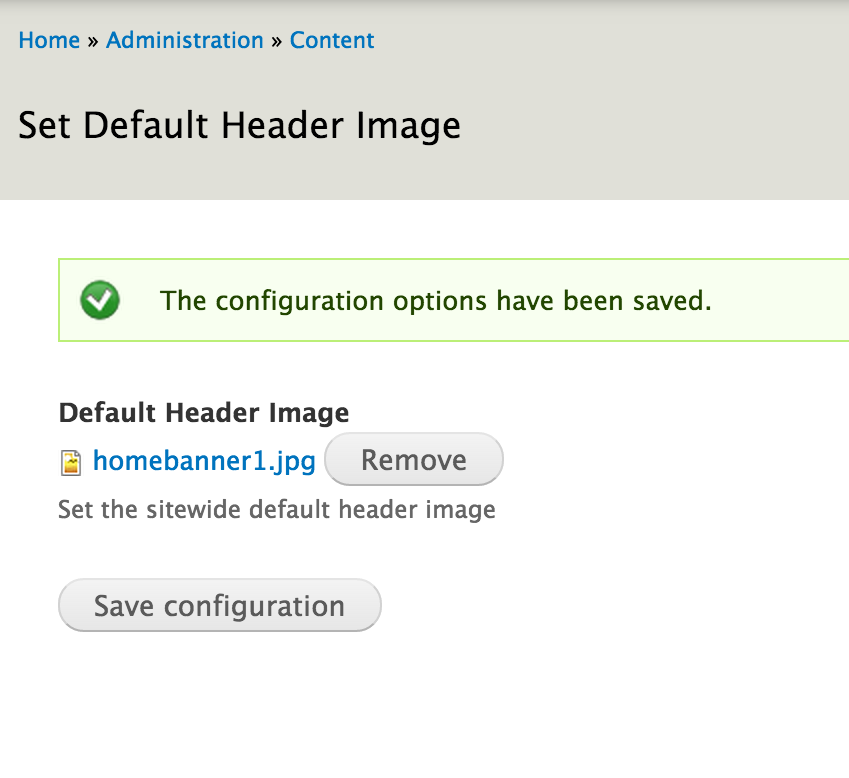I recently ran into a situation where I needed a fallback image for pages that didn't have a default header image. To do this I created a custom module that provided a configuration page to upload an image. In retrospect, it would have been cleaner to add this to the theme administration page, but this worked well enough.
First, we add a configuration page using hook_menu:
<?php
/**
* @file
* mymodule.module
*/
/**
* Implements hook_menu().
*/
function mymodule_menu() {
$items['admin/content/set-default-header-image'] = array(
'title' => 'Set Default Header Image',
'page callback' => 'drupal_get_form',
'page arguments' => array(‘mymodule_set_default_header_image_form'),
'access arguments' => array('access administration pages'),
'file' => ‘mymodule.pages.inc',
);
return $items;
}
Next, we add the configuration page callback:
<?php
/**
* @file
* mymodule.pages.inc
* Part of the mymodule package.
*/
function mymodule_set_default_header_image_form(){
// Add a managed file form element for uploading an image
$form['mymodule_default_header'] = array(
'#type' => 'managed_file',
'#title' => t('Default Header Image'),
'#description' => t('Set the site-wide default header image'),
'#upload_location' => 'public://files',
'#default_value' => variable_get('mymodule_default_header', ''),
);
// Add custom submit handler to set the file status to permanent
$form['#submit'][] = 'mymodule_set_default_header_image_form_submit';
return system_settings_form($form);
}
The managed_file form element is quite handy. It adds an image uploader to your form with minimal effort. Using system_settings_form, we save the file fid for future use. The part that I missed initially is outlined in the managed_file documentation - that you need to set the file status to permanent in your module. Otherwise, it get’s removed on cron.
To do this, we add an additional submit handler:
/*
* Additional submit handler for making the file permanent
*/
function mymodule_set_default_header_image_form_submit($form, &$form_state){
$form['mymodule_default_header']['#file']->status = FILE_STATUS_PERMANENT;
file_save($form['mymodule_default_header']['#file']);
}
We can then use the image elsewhere on the site:
<?php
// Load image fid
$image_fid = variable_get('mymodule_default_header');
// Load image
$image = file_load($image_fid);
// Get URL
$url = file_create_url($image['uri']);
The result:

Need a fresh perspective on a tough project?
Let’s talk about how RDG can help.